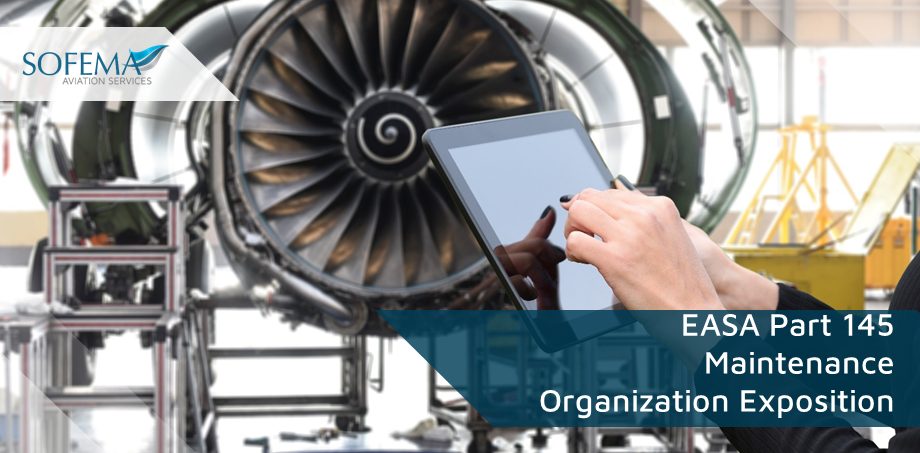Sofema Aviation Services (SAS) www.sassofia.com considers the challenges and best practices related to the optimization of the EASA Part 145 Maintenance Organization Exposition (MOE)
Introduction
Performance auditing within an Aviation EASA Part 145 Maintenance organization involves evaluating the three “E”s:
- Economy,
- Efficiency, and
- Effectiveness.
The purpose of performance auditing is to assess management’s performance and determine if the organization is achieving a good return on its investment.
- It focuses on measuring the effectiveness of processes and procedures rather than ensuring regulatory compliance, which is assumed to be in place.
Note – The overall goal of a performance audit in an EASA Part 145 Maintenance organization should be to improve the economy, efficiency, and effectiveness of operations without compromising safety or regulatory compliance.
What is Performance Auditing & What are the Actual Steps to Take?
Performance auditing is an independent, objective assurance and consulting activity designed to add value and improve an organization’s operations.
It helps an organization accomplish its objectives by bringing a systematic, disciplined approach to evaluate and improve the effectiveness of risk management, control, and governance processes.
- Before approaching the performance assessment/audit, gather the necessary information concerning, risk areas, and pay attention to relevant regulations.
- Identify key areas of risk within the MOE.
o This could be based on past audits, changes in regulation, or new procedures or practices within the organization.
- Analyze the collected data in the context of the audit objectives, risk assessments, and criteria.
o To compare the organization’s procedures and processes to EASA requirements, identifying discrepancies or areas of risk, and identifying potential improvements.
- Prepare a summary report detailing the findings of the audit, including any non-compliance issues, risks identified, and recommendations for improvements.
o This report is then presented to the process / procedure owner for further consideration and potential action.
Note – Provide actionable recommendations for improving performance and achieving better outcomes.
Potential Business Activities & Areas to Review
It’s essential to note that the specific steps and focus areas might vary depending on the nature of the organization and the specific objectives of the audit. The aim is always to improve the performance and compliance of the organization, and ultimately, the safety and airworthiness of the aircraft being maintained.
In the context of an EASA Part 145 MOE, a performance audit could identify procedural changes such as:
- Updates needed to keep up with changes in EASA regulations or guidance
- Improvements in the handling of non-routine maintenance tasks
- Changes to increase the efficiency or effectiveness of maintenance procedures
- Improvements in the processes for training and certifying maintenance personnel
- Enhancements to quality assurance processes
- Changes to enhance the organization’s safety culture
When conducting performance audits in an Aviation EASA Part 145 Maintenance organization, there are several challenges and best practices to consider:
Challenges to an Effective MOE Performance Review
- Maintenance of aircraft is a complex process involving many different systems and subsystems. This complexity can make it difficult to assess the efficiency and effectiveness of operations.
- Extracting meaningful insights from this data for performance auditing purposes can be challenging.
- Poor performance in aviation maintenance can have catastrophic consequences. Ensuring that any cost-cutting measures or efficiency improvements do not compromise safety is crucial.
Best Practices for Optimum Business Process Improvements
- Identify key performance indicators related to economy, efficiency, and effectiveness. These could be financial metrics, turnaround times, defect rates, etc. Monitor these KPIs closely and continuously.
- Prioritize audit areas based on risk. Higher-risk areas should receive more attention and scrutiny.
- Consider a continuous auditing approach which allows for timely detection and correction of performance issues.
- Encourage open and transparent communication within the organization.
o This can help uncover potential issues and solutions, improving the overall performance.
Next Steps
Please see the available course Development and Management of EASA 145 Maintenance Organisation Exposition (MOE) – 1 Day
For questions or comments please email team@sassofia.com
Tags:
audit objectives, Auditing, Aviation EASA Part 145 Maintenance organization, defect rates, EASA Part 145 Maintenance Organization Exposition (MOE), EASA requirements, Economy, financial metrics, Key Performance Indicators (KPIs), Performance Auditing, Process Improvements, Regulatory Compliance, Risk Assessment, Safety Culture, SAS blogs, SAS Library, turnaround times




